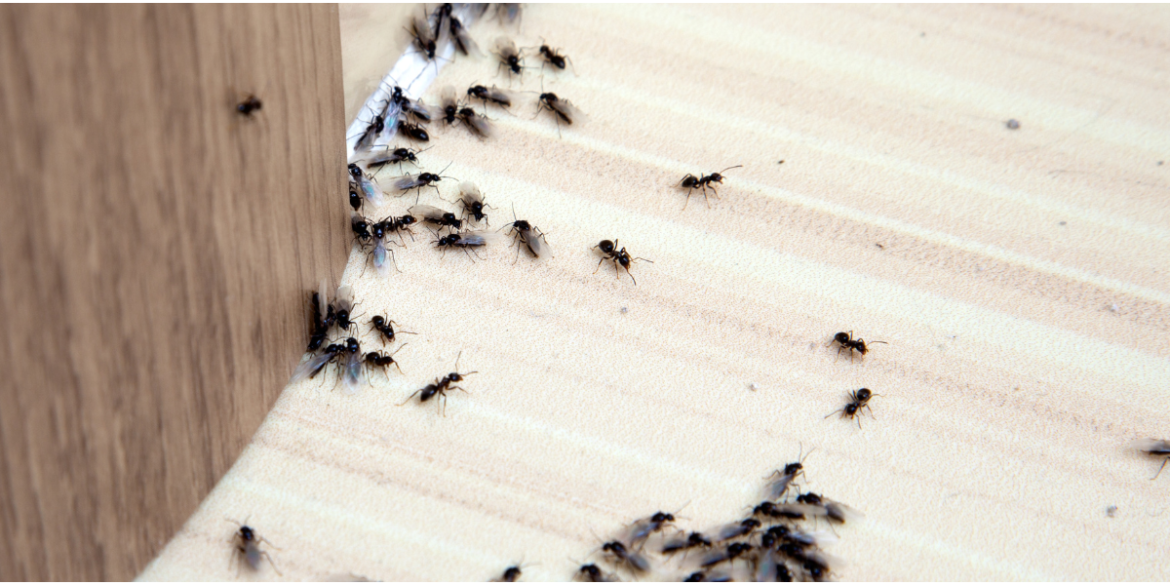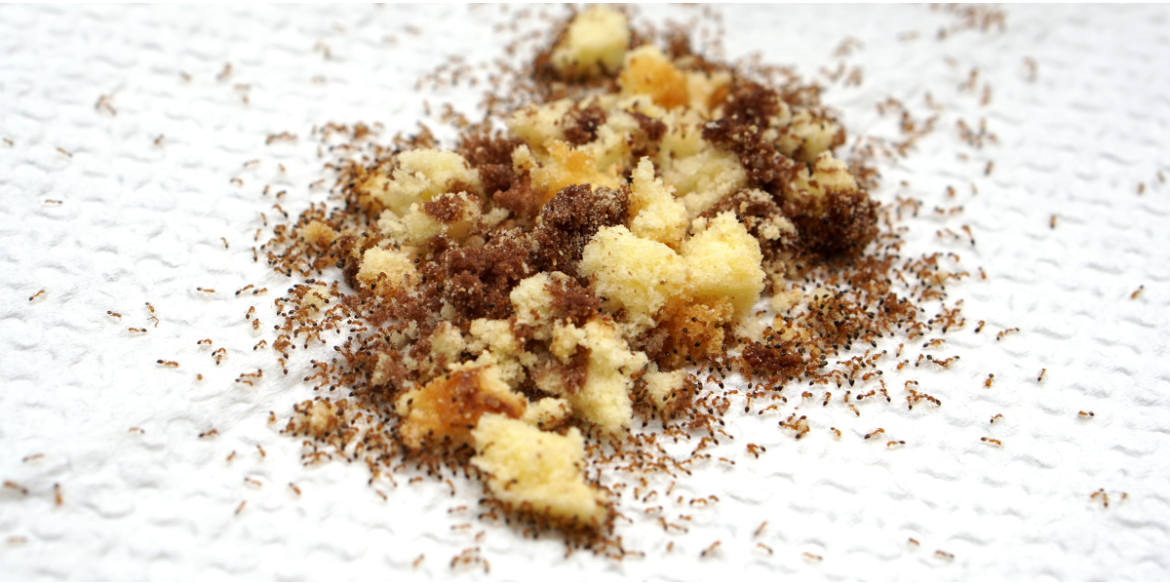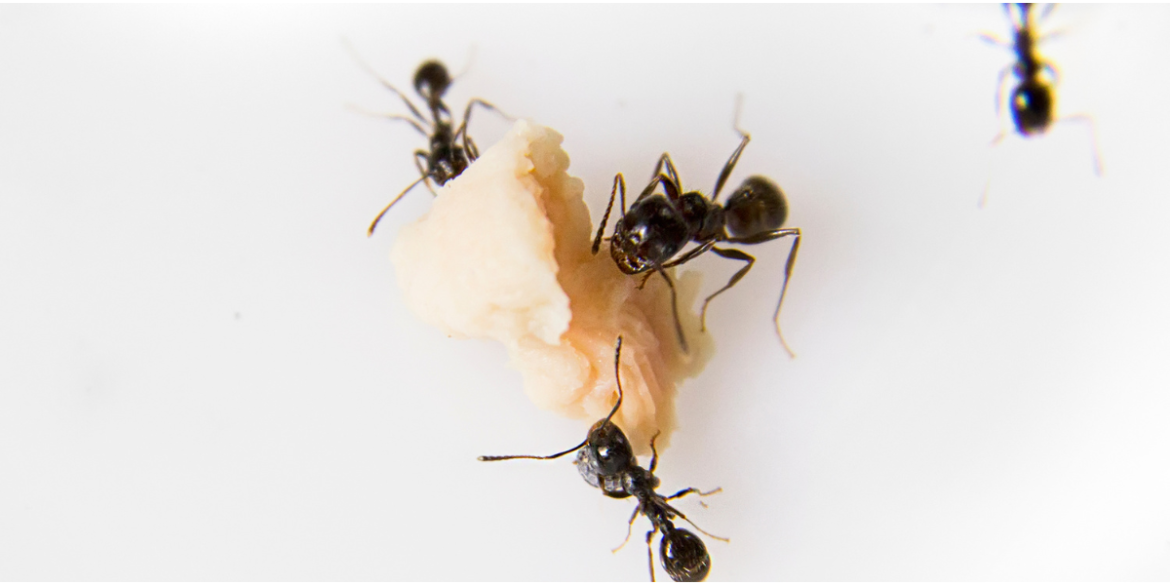Cleaning
How to get rid of house ants in winter
Do you have an ant problem in your home but thought it was only a summer issue? Think again! Although many ant species become inactive during the cold winter months, some species remain active and cause disruption even after temperatures drop. Unfortunately, colder winter weather makes removing house ants more difficult since insecticide sprays are less effective when temperatures dip too low. If you’re looking for ways to secure your home from these unwelcome visitors this season, learn how to get rid of house ants in winter with this step-by-step guide.

This post contains affiliate links, and The Organizer UK may earn commissions for purchases made through the links in this post. For more details, see here. Thank you so much for your support!
How to get rid of house ants in winter.
- Understand the biology of ant behavior in winter.
Ants live in colonies and will look for a warm place to stay during cold weather.
During the winter months, ants are like many other creatures in that they seek out warm places to take refuge from the cold weather. Ant colonies, comprised of thousands of individual ants, adapt their behavior to the change of seasons, significantly hibernating or slowing down their activity levels. When the temperature dips below a certain point, ants become less active and retreat to their nest to huddle and conserve warmth. Understanding the biology of ant behavior in the winter is a fascinating study area that sheds light on the survival mechanisms of these remarkable little creatures. By learning more about how ants survive winter, we can better appreciate the complexity and resilience of the winter ants. - Look for the source of the infestation
How to find an ant colony in your house.
If you think you have an ant colony in your house, here are some steps to help you find out for sure.
✔️ Look for ant trails and activity around the edges of your walls and windows. Ants inside the home usually leave behind trails that can be identified by a sticky residue.
✔️ Check inside cupboards and drawers for ant nests. Ants usually build their nests in dark, secluded areas.
✔️ Look around your countertops and other surfaces for ant trails or signs of nesting.
✔️ Inspect any potted plants you have in your house, as ants may be living in the soil.
✔️ Place bait around the perimeter of your house to see if ants are attracted to it. - Seal potential entry points.
Ensure that window frames and doors are properly sealed to keep ants from entering your house in search of warmth. As the temperatures drop, ants often uninvitingly seek the warmth of our homes. Sealing potential entry points is the key to keeping these ants out of your home. Ensuring that your windows and doors are correctly sealed is a task that requires attention to detail for successful ant control. Ants are tiny and can find their way through even the smallest gaps, so ensure you don’t leave any openings!
- Inspect food sources to ensure no crumbs or other food that attract ants are available.
Keep food stored in airtight containers. Clean up spills quickly, and remove garbage regularly. Eliminate water sources around your home, such as dripping faucets and standing water. Use ant baits which will help control the ant population. Keep the kitchen and other food preparation areas clean, including countertops, floors, and appliances.

- Use store-bought traps
Set out bait traps with sweet substances to attract the ants, such as honey or sugar water. Store-bought traps like these ones can be found at any hardware or home improvement store and are designed to lure in the ants and trap them inside. The sweet smell will attract the ants, and the trap will prevent them from spreading further into your home. Keeping the traps stocked with fresh bait is essential to ensure maximum effectiveness. Using store-bought traps is a simple and effective way to rid your home of ants.
- Create homemade traps
If you’ve started seeing ants inside your home, use everyday household items, like citrus peels or vinegar, to create your DIY ant traps.
Simply place the citrus peels in areas where you see the ants entering your home.
Another effective method is to mix equal parts vinegar and water and spray it in areas where the ants are present. The strong smell of vinegar in this DIY pest control spray will deter ants from entering your home. - Call a pest control company for help.
If all else fails, contact a professional exterminator who can help remove the ant colony.
Taking action immediately is essential when dealing with an ant infestation. While many do-it-yourself methods may work for more minor problems, sometimes calling in commercial pest control services is the best course of action. Exterminators have the training, experience, and tools to eliminate even the most stubborn ant infestation. They can also provide advice on how to prevent future infestations.
Ants typically hibernate in temperatures below 10°C (50°F). Hibernation is more common in colder climates, and ants may enter a state of dormancy during periods of prolonged heat. When ant populations are affected by extreme weather conditions, they may remain dormant until the climate improves and adequate food sources can be found.
Carpenter ants are large, black ants that can be found in the northern and western parts of the United States. They get their name from their habit of building nests inside wood by excavating galleries and tunnels. They prefer moist wood but will settle for dry wood if necessary. If left unchecked, Carpenter ants infestations can cause significant structural damage to buildings and homes. They can also contaminate food sources in the home, transmit disease-causing bacteria, and be a nuisance to humans. To prevent an infestation, it is important to identify signs of carpenter ants and take steps to protect your home from them. Common signs of a carpenter ant infestation include:
* Sightings of large, black ants in or around your home
* Piles of sawdust near wood structures
* Discarded wings from swarming ants
* Tiny holes in wooden furniture and walls to prevent an infestation.
It is important to ensure that the environment inside and outside your home is not conducive to carpenter ant activity. These steps include:
* Sealing cracks and holes in the exterior of your home
* Cleaning up any wood debris or mulch that may be around the foundation
* Keeping tree branches trimmed away from the sides of your house
* Repairing water-damaged areas to reduce moisture
* Regularly inspect walls, windows, and doors for signs of infestation.
Stink bugs or pentatomidae, are a type of shield-shaped bug that release an unpleasant odor when disturbed or crushed. They are found worldwide, with over 5,000 species identified in North America alone. Stink bugs tend to live outdoors and feed on plants, although they can also find their way indoors if there’s a point of entry. Stink bugs reproduce quickly, so if an infestation is left unchecked, it can grow rapidly. They are especially active during the summer months and have the ability to fly, making them difficult to contain. In addition to the foul odor they emit, stink bugs also cause damage to crops and vegetation by feeding on them. To prevent or control a stink bug infestation, the first step is to inspect your home for any potential points of entry and seal off any cracks or gaps that you find. You can also use insecticides and traps to reduce their population size. Additionally, removing weeds and vegetation around your property can help deter them from entering your home.
Winter can be a challenging time of the year for homeowners dealing with annoying house ants. By understanding their biology, it’s possible to take steps that can reduce the ant population entering your home. Sealing potential entry points and inspecting for food sources are critical tasks; store-bought traps and DIY options may also help if needed. Ultimately, if all else fails, contacting an organic pest control company with access to safer treatments and more powerful solutions to remove an infestation is wise. With just these few tips, you can keep your home comfortable and ant-free this winter! Do you have problems with house ants in the winter? Let us know in the comments!
Read this post to find out how to prevent bed bugs.


